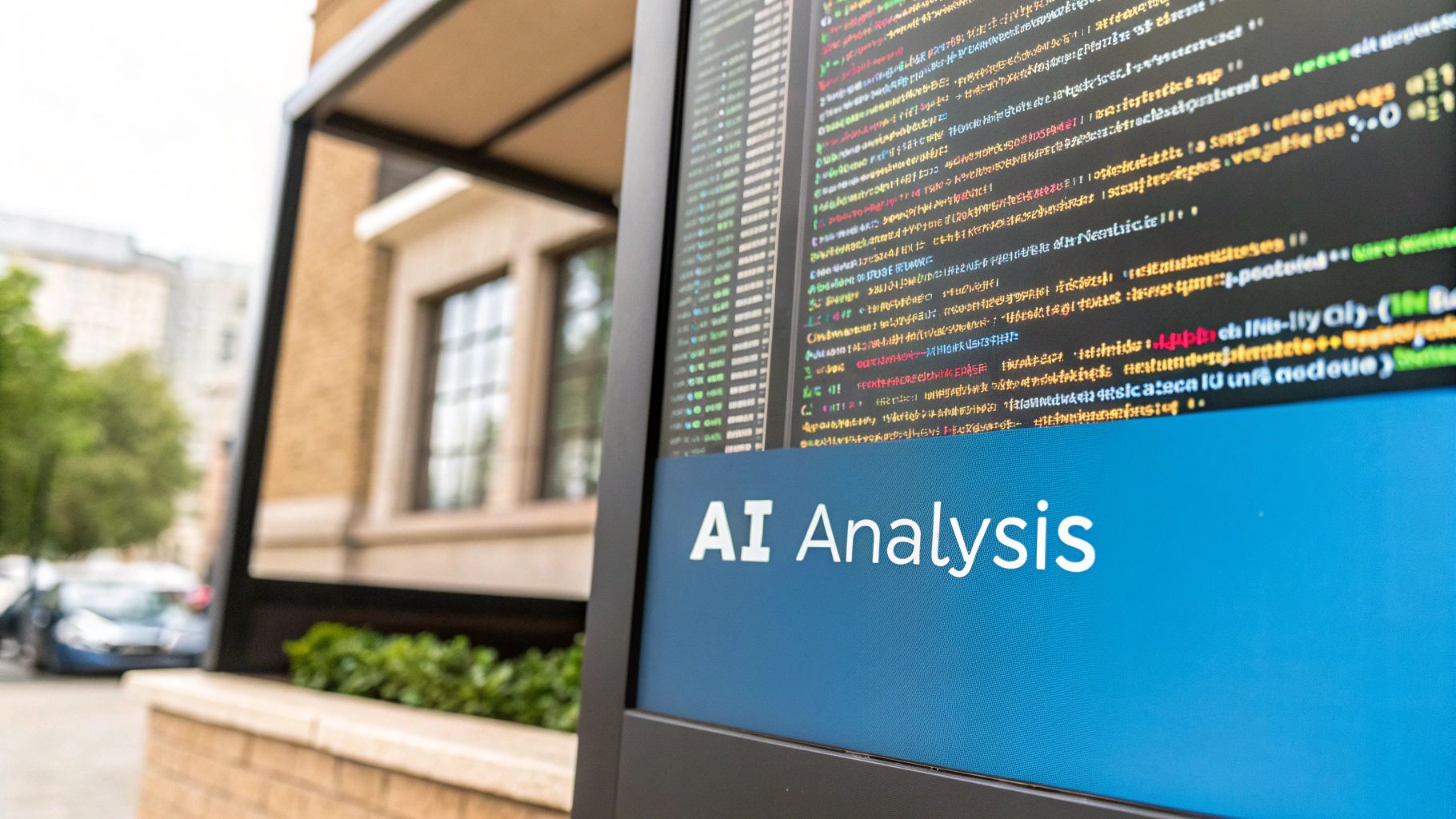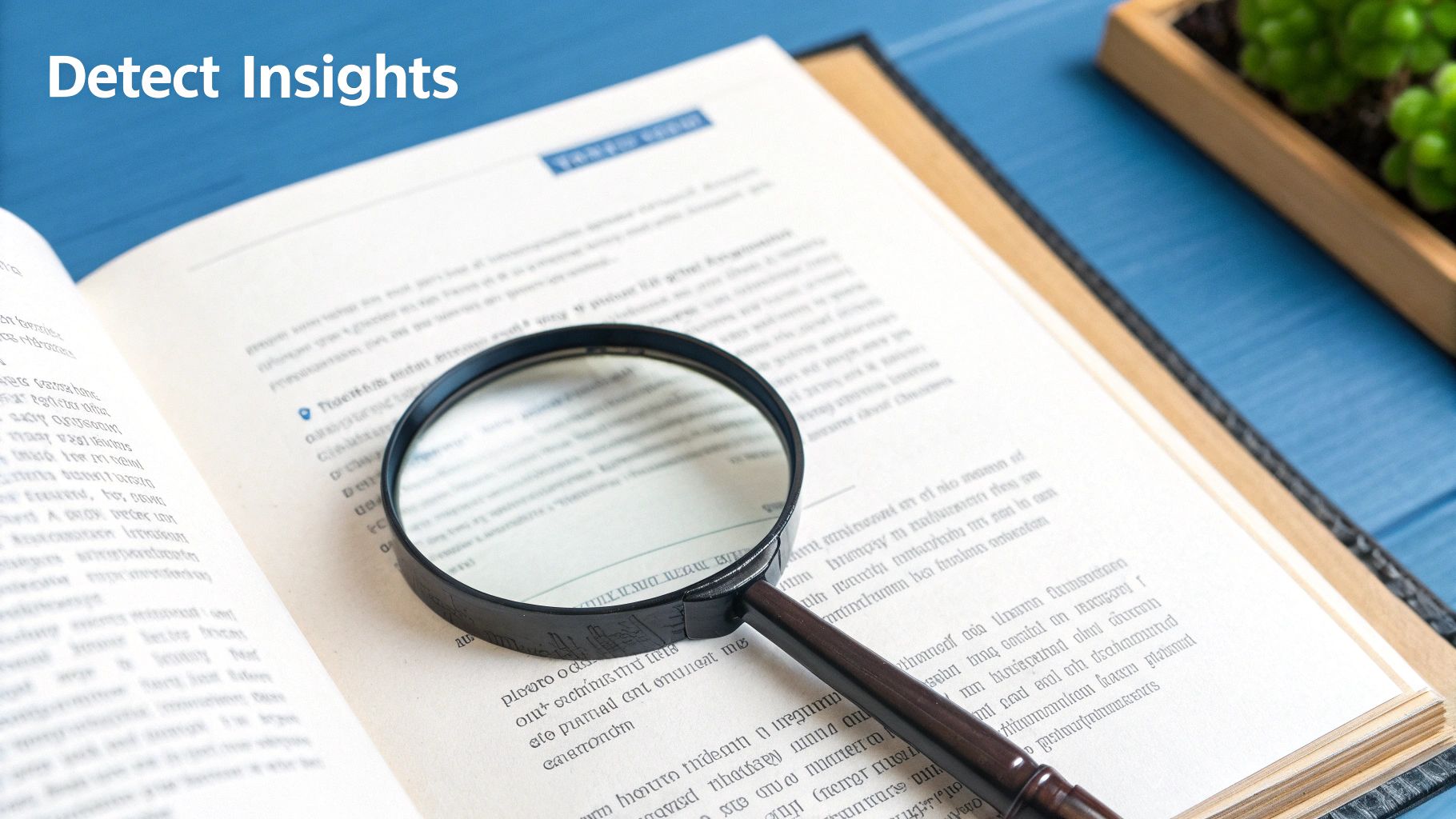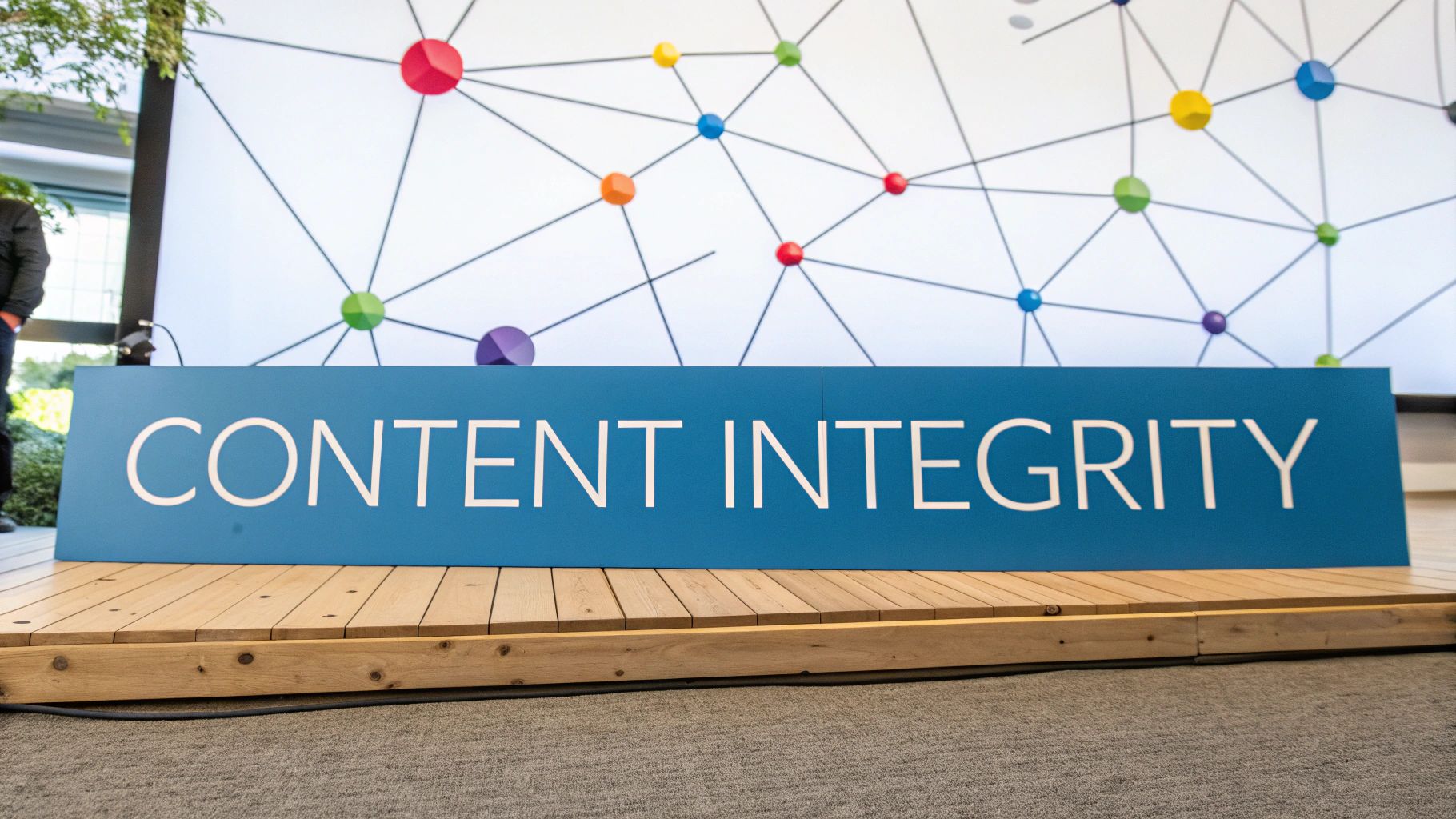The Reality of AI Content in Today's Digital Space

AI writing tools have fundamentally shifted how online content is created and distributed. Content creators and marketers now face both new possibilities and important considerations around search optimization and content authenticity. Understanding the current state of AI content has become essential for anyone publishing material online, as it affects everything from rankings to reader engagement.
How AI Content Affects Search Results
Search engines handle AI-generated content in complex ways that aren't yet fully understood. While some AI content ranks well, other pieces struggle to gain traction – often depending on factors like depth of analysis and unique insights offered. For instance, surface-level AI content that simply restates obvious facts tends to perform poorly compared to human-written pieces that provide fresh perspectives and valuable information. This highlights why using detection tools to assess content quality has become increasingly important, even when incorporating AI writing assistance.
Adapting to Evolving Algorithms and Platform Responses
Search and social platforms are getting better at identifying AI-created content through refined algorithms. Google and Meta have both made strides in detecting and categorizing automated content. For example, Meta now flags images with clear AI markers. Content creators must stay informed about these changes while maintaining authenticity in their work. Rather than relying solely on AI generation, successful creators combine automated tools with human oversight.
Practical Navigation and Maintaining a Competitive Edge
Finding the right balance between AI assistance and human creativity is key. While AI excels at tasks like research and basic writing, human input remains crucial for accuracy, nuanced analysis, and establishing a distinctive voice. Content creators can maintain quality by using AI selectively while ensuring thorough human review and editing. Detection tools provide an additional quality check – an important consideration as the content detection market is expected to reach $31.42 billion by 2029.
The Growing Importance of Authenticity and Human Input
With AI content becoming commonplace, authenticity and clear human perspective are increasingly valued by both readers and search engines. Content that offers unique insights and demonstrates real expertise tends to outperform generic AI-generated material. Success requires combining the efficiency of AI tools with genuine human creativity and critical thinking. Quality detection tools help maintain these standards by identifying potentially problematic content before publication.
Breaking Down Modern Detection Technologies

With the growing need to verify content authenticity, AI content detection tools have become essential. These tools use multiple methods to spot computer-generated text, but how exactly do they work? Let's explore the key techniques they use to analyze and identify AI-written content.
Statistical Analysis of Text Features
The foundation of AI content detection starts with analyzing basic text characteristics. Detection tools examine elements like sentence structure, word choice patterns, and punctuation usage. AI writing tends to show certain telltale signs – like overly uniform sentence lengths or heavy use of common words. However, this method alone isn't perfect. As AI writing improves at mimicking natural language, simple statistical analysis becomes less reliable and can lead to both missed detections and false alarms.
Identifying Predictable Patterns and Repetition
The next layer of detection focuses on finding repeated phrases and predictable writing formulas. Early AI writing relied heavily on templates and stock phrases that detection tools learned to spot. Modern tools can identify when text lacks originality or simply rewords existing content. But AI writing is getting better at varying its output, which means detection systems need more advanced methods to catch subtly generated content.
Contextual Understanding and Semantic Analysis
More advanced detection tools now incorporate deeper analysis of meaning and logic. They evaluate whether ideas flow naturally and arguments make sense within their context. This helps distinguish between human writing, which typically shows complex reasoning and subtle connections between ideas, and AI text that may struggle with sophisticated logical relationships. This deeper level of analysis has become crucial as AI-generated content grows more refined. Learn more in our article about How to Master AI Content Detection.
Combining Multiple Detection Strategies for Maximum Accuracy
As AI writing technology advances, content teams find that using multiple detection methods together yields the best results. Each approach has its strengths – statistical analysis might catch unusual patterns, while semantic analysis examines the deeper logic and flow. Using these methods together helps overcome the limitations of any single approach. This comprehensive strategy is becoming essential for maintaining content quality and credibility. The growth of the content detection market, expected to reach $31.42 billion by 2029, shows just how important accurate AI text identification has become.
Building a Reliable Detection Strategy
Creating an effective system to detect AI-generated content has become essential for maintaining content authenticity online. Recent data shows that AI content now makes up 18.5% of Google search results as of November 2024 – the highest level since tracking began in 2019. Let's explore how to build a reliable detection approach that works at scale.
Establishing Clear Content Verification Protocols
The foundation of any detection strategy starts with well-defined verification steps. Think of it like a recipe – you need clear ingredients and instructions to ensure consistent results. This means choosing appropriate detection tools and setting guidelines for when human review is needed. For instance, a basic blog post might only require automated screening, while an academic paper would benefit from expert analysis to catch subtle signs of AI generation.
Training Your Team for Effective Detection
Success depends not just on tools but on skilled people who know how to use them. Team members must understand the key characteristics of AI content and how to interpret detection results accurately. It's similar to learning a new language – true mastery comes from understanding both the technical rules and deeper context. Training should cover both the practical use of detection tools and broader knowledge about how AI generates content. This gives your team the complete skillset needed to make informed decisions.
Building Scalable Verification Workflows
For detection to work across large volumes of content, you need efficient processes integrated into your existing systems. This could mean adding automated checks at key stages, from initial drafts through final publishing. Different content types may need different approaches – high-volume content might use more automation, while complex pieces require extra human oversight. The key is creating clear workflows that maintain quality without creating bottlenecks.
Maintaining Quality and Resource Optimization
While automation helps with scale, human judgment remains vital for accuracy. Think of human reviewers as quality control experts who can spot nuances that automated tools might miss. You'll need to balance your investment between detection tools and staff time based on your specific needs. The content detection market is expected to reach $31.42 billion by 2029, making smart resource allocation crucial. By carefully combining automated and human elements, you can build a detection system that's both thorough and cost-effective.
Overcoming Advanced AI Detection Challenges

As AI writing technology advances, detecting AI-generated content requires increasingly sophisticated methods. Simple pattern matching is no longer enough – we need to examine the deeper aspects of language use and logical flow. Let's explore the key challenges and practical solutions for identifying advanced AI writing.
Identifying Subtle Indicators of AI-Generated Content
Basic AI detection tools often look for obvious signs like repetitive phrases or unusual word patterns. However, modern AI can skillfully vary its writing style to bypass these simple checks. More nuanced analysis is needed. For instance, while AI can competently present facts and information, it typically struggles to provide genuine personal insights or make creative connections between ideas in ways that feel authentic and original.
The Limitations of Current AI Content Detect Methods
While detection tools continue to improve, they face some inherent challenges. Most current methods rely on identifying statistical patterns that deviate from typical human writing. However, as AI becomes better at mimicking natural language, these deviations become harder to spot. This means automated tools alone may incorrectly flag human content as AI-generated or miss sophisticated AI text. A more complete approach combining multiple detection methods works best.
Strategies for Handling Edge Cases in AI Detection
Some of the trickiest detection scenarios involve hybrid content. For example, when writers heavily edit AI-generated text by adding their own insights and refining the language, the final piece contains both human and AI elements. Similarly, content created through AI-assisted writing – where AI helps with initial drafts but humans maintain creative control – presents a gray area. These nuanced cases require careful evaluation beyond simple automated checks.
Differentiating Human-Edited AI Content From Original Writing
The key lies in recognizing the hallmarks of authentic human writing. Watch for evidence of true critical thinking, emotional depth, and real-world experience that AI currently cannot replicate convincingly. While AI excels at presenting information, it often fails to naturally weave in personal stories or offer meaningful subjective perspectives. Pay attention to how ideas connect and flow – human writing tends to progress naturally, while AI content may feel disconnected or abruptly shift topics. With the AI content detection market expected to reach $31.42 billion by 2029, developing these analytical skills is becoming essential. The most effective approach combines careful human evaluation with reliable detection tools to identify increasingly sophisticated AI text.
Implementing Detection Tools Effectively

Getting the most out of AI content detection tools requires careful planning and execution. While having access to these tools is important, the key to success lies in how you integrate them into your content workflow and train your team to use them properly.
Choosing the Right AI Content Detect Tools For Your Needs
Start by evaluating which detection tools match your specific content needs. Consider factors like whether you mainly work with short social posts or long-form articles, and if your primary goal is preventing plagiarism or validating content authenticity. Some tools excel at statistical analysis of text patterns, while others focus on semantic meaning. For instance, certain tools work best for quick social media scans, while others provide deeper analysis for long articles. Often, the best approach combines multiple tools to cover different aspects of content verification.
Training Your Team on Effective AI Content Detection
Your team needs more than just technical knowledge – they need to understand the purpose behind using these tools. Think of it like learning photography – knowing which buttons to press is one thing, but understanding composition principles makes a real difference. Your team should learn to spot the subtle signs of AI-generated content and properly interpret detection results. For example, when a high AI probability score appears, it could mean either completely generated text or heavily edited human writing. This requires developing good judgment through practice. You might be interested in: How to master grammar for clearer writing.
Establishing Reliable Verification Processes
Create consistent checking procedures that fit naturally into your content workflow. Build verification steps into key stages – during initial drafting, after editing, and before publishing. This creates multiple checkpoints to catch potential issues.
| Stage | Verification Process |
|---|---|
| Drafting | Initial scan for AI-generated content |
| Editing | Re-check after revisions and human edits |
| Pre-Publishing | Final verification before content goes live |
Adjust your verification depth based on content importance. A quick tweet might need just a basic scan, while an in-depth report requires thorough analysis across multiple tools.
Balancing Automated Detection With Human Expertise
While AI detection tools provide excellent initial screening, they shouldn't be your only line of defense. As AI writing technology improves, it becomes better at mimicking human writing styles, making pure automated detection less reliable. Human reviewers bring crucial skills in spotting contextual inconsistencies and subtle writing quirks that tools might miss. The best approach combines efficient automated scanning with skilled human review. With the AI content detection market expected to reach $31.42 billion by 2029, investing in both technology and human expertise positions you well for maintaining high content standards and building audience trust.
Planning for Future Detection Needs
Content detection is a field marked by continuous growth and evolution. As AI writing tools get better at mimicking human writing, detection methods must also improve to keep pace. Success requires staying current with developments in both AI content generation and detection technology while making careful choices about which tools and approaches will provide lasting value.
Emerging Technologies and Methodologies
Detection technology is moving beyond basic pattern matching to more sophisticated analysis methods. Current research explores ways to evaluate the semantic structure and logical flow of text to spot potential AI authorship. Advanced natural language processing allows for more detailed linguistic analysis that can better distinguish between human and machine-written content. This shifts the focus from finding statistical patterns to understanding how ideas connect and flow throughout a piece of writing.
Preparing for the Challenges Ahead
A major obstacle is the rapid advancement of AI writing capabilities. As AI-generated text becomes increasingly natural and nuanced, even advanced detection tools struggle to identify it consistently. This necessitates continuous updates to detection methods. There are also important ethical considerations to address, such as ensuring detection algorithms remain fair and unbiased in their assessments. For more insights on improving detection accuracy, see: How to master AI content detection for better results.
Investments for Long-Term Value
Choosing detection tools that can adapt and grow over time is essential. Look for solutions backed by ongoing research and development to ensure they stay effective as AI writing technology advances. Equally important is investing in team training – having skilled people who understand how to use these tools effectively and interpret their results accurately is crucial for success.
Adapting Your Strategy
Flexibility is vital when working with AI content detection. Your approach should evolve through regular review and updates, incorporating new methods as they emerge. Rather than using a fixed process, develop an adjustable framework that can be tailored to different content types and scrutiny levels. For instance, while a blog post might only need basic automated checks, academic papers require more thorough analysis.
For students seeking academic writing support, SmartStudi offers a comprehensive set of AI-powered tools. These include detection and plagiarism checking capabilities, along with grammar correction and citation assistance – everything needed to produce high-quality academic work. Visit SmartStudi today to explore these resources and strengthen your academic writing skills.
